Our
handicraft
techniques of
precious stone engravings
|
Our main tool is
a small lathe with a horizontally lying shaft. This shaft can
be put on with different tools in form of slices, balls, cones
and needles. Boards contain lots of those small tools. An electric
motor makes 3000 up to 5000 revolutions per minute. Both hands
lead the precious stone to this fixed spindle. This requires
highest precision and deep knowledge of the stones' characterics.
|

work at
the engraving
|
|
The rotating tools
are continuously coated with powder containing diamond dust
and are additionally oiled. The tool is kept cool and simultaneously
covered with a rough surface, because the diamond parts penetrate
the weak iron mass of the tools while engraving.
In addition to those traditional iron tools, we use also tools
containing diamond ingredients.
Flexible lathes are used for bigger objects.
The polishing is made with wood, leather or other soft materials
in combination with water and special polishing pastes.
|
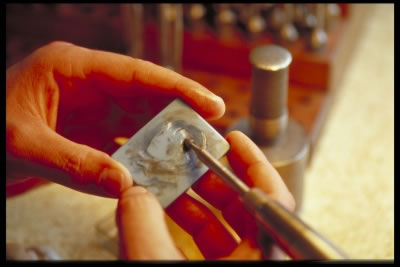
Some elements of the finished engraving are polished with a special
powder. |
|
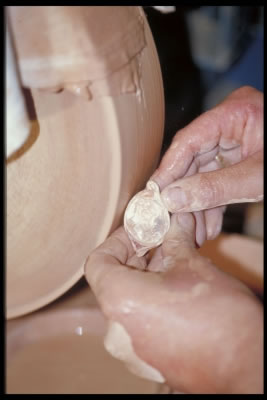
Some elements
of the finished engraving are polished with a special powder.
|
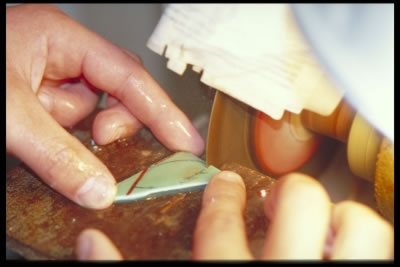 A cameo
is cut in its future form with a diamond cutting slice.
A cameo
is cut in its future form with a diamond cutting slice. |
|
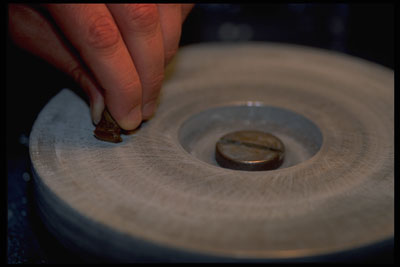
Procedure of polishing of a citrin at the horizontally rotating
polishing slice (alloy of zinc and lead). The finished stone
can be discovered in the category "unique
jewelry".
|
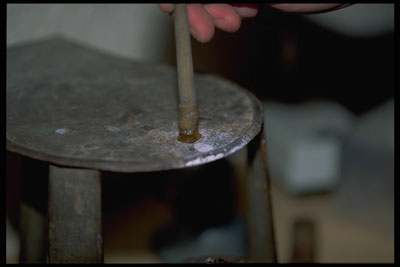
A citrin is cemented for treatment.
|
|
|
This description
may only give a reduced view to the art of engraving.
We would be delighted to welcome you here if you have any
other question about the techniques and products.
You may even try yourself !
If you want to be invited to the next exhibition, please make
use of our contact page..
|
Historical
development
|
Stone engraving,
also called glyptic (ancient Greek), not only relates to cutting
cameo (stones engraved with relief), but also to production
of smaller items of decoration and adornment.
|
|
|
The oldest engravings
are hollow cylinders covered with symbols and figures, used
as amulets or seals. They were found in the areas once inhabited
by the Sumer, Babylon and Assyrians.
The first seals ever
made were with simple scratches, ever since the 4th millineum
B.C. First stone engraving showing figures were the famous Scarab
in Egypt.
|
|
The ancient Greek used to professionalize the art of stone engraving.
So did the Romans. During the Middle Ages the further development
of stone engraving came to a halt. During Renaissance period Italy
rediscovered this ancient art. Today, this art of engraving is
considered to be at fairly high level of development and technology,
combining creativity and a tight link to our clientel. Worldwide,
the center today is in Idar-Oberstein, Germany and its region.
|
|
|